Where the chemistry is right
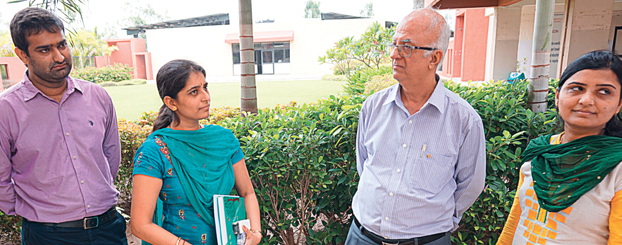
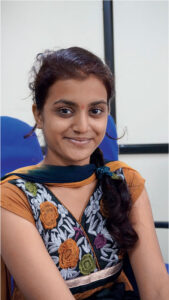
The slender girl seated before me, Vaibhavi Patel, says she is 18, but looks 14. Training to be an electrical engineer at the Shroff S R Rotary Institute of Chemical Technology (SRICT) at Ankleshwar, about 78 km from Baroda, she hesitates when asked about her future dream.
In a whisper, she says “…my dream is rather big.” Prompted she spells it out: “Actually it is the dream of both my father and grandfather, that I become an IAS officer, because nobody from our family is educated. So they have a lot of hope on me.”
With a paralysed father and from a humble background, Vaibhavi, now in second year, was academically faring badly. “In this college we give importance to academics; our students have to give a ‘commitment’ when they join on their future scores on a scale of 1–10, and this is monitored,” says Ashok Panjwani, a PDG from the Rotary Club of Ankleshwar. Managed by the Ankleshwar Rotary Educational Society, SRICT was
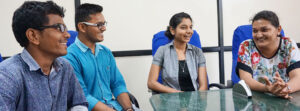
promoted by United Phosphorus Ltd (UPL).
Vaibhavi’s teacher soon learnt the disturbing conditions in her home and she was helped to concentrate on her studies. Her score now: 90 per cent!
The beginning
In 2001, the club decided on a long term educational project and thanks
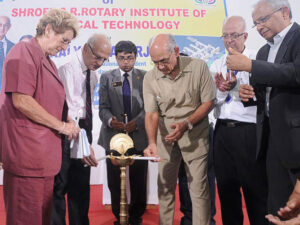
to the efforts of PP N S Mehta, it managed to buy 25 acres of government land at Rs 5 lakh. “Today this is worth Rs 8–10 crore but at that time even this amount was difficult and one of the banks gave it to us.”
A chemical engineer from Mumbai’s prestigious college (now called the Institute of Chemical Technology), which is “better than IIT for chemical engineering,” the Rotarians thought that as this belt of Gujarat — from Ankleshwar to Bharuch — is brimming with chemical industries, and 60–70 per cent of chemicals in India produced here with good colleges available only in Mumbai, “a college in chemical technology in Ankleshwar was required to service the chemicals industry.”
With both UPL and RC Ankleshwar working to make Ankleshwar, then
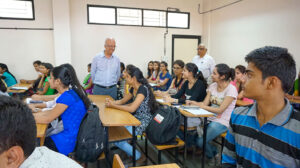
a very polluting place, pollution free, addition of a course in environment science was logical. “It’s no exaggeration to say that thanks to Rotary, many pollution control efforts have reached Ankleshwar. We have also planted a lot of trees,” says Panjwani.
Along with these subjects, mechanical and electrical engineering streams are also available; the environment science course is the college’s usp.
Finding the money
By 2004–05, the land was acquired and other spadework done; “we estimated, rather naively, we would need Rs 10 crore for this college,” he recalls. He requested UPL for a donation of Rs 2.5 crore, and at the meet held in 2005 to felicitate Panjwani, who had become DGN, UPL Chairman Rajju Shroff announced the donation of Rs 2.5 crore and the Rotarians were delighted. But with the chemical industry not buoyant then, the money from UPL and other industries too, came only in 2008–09, and the dream project took concrete shape.
By now the UPL Vice Chairman Sandra Shroff had got fully involved and “as she wants total quality in everything, the costs started climbing.” So UPL, where Panjwani is now the Executive Director, was again approached and “they said we’ll give you Rs 30 crore, and make up whatever deficit you might have.”
With this shot in the arm — the Rotarians were clear this would be a non-profitable venture — they went ahead to recruit quality teachers who needed to be paid good salaries, as the fees is anyway decided by the government. This is a rare professional private college where the 25 per cent management quota seats have no capitation fee and are charged the government-fixed fee — Rs 40,000 a year in 2011, and now Rs 80,000.
What about government help? “We want to make this a centre of excellence and a world class institute and government involvement of any kind anywhere makes that difficult,” says Panjwani, adding that they have also kept away from Rotary’s Global Grants as “that money should be used only for primary education.”
The first batch enrolled in 2011; “Kalyan Banerjee, as the RI President in 2011–12, inaugurated this college on July 15; this was his first public service event as RI President.” The second and third phases were inaugurated by Ron Burton as RIPE. The college strength is 1,100 students.
65% campus placement
The first batch of 154 graduates has got “very good results,” with 65 per cent getting campus placement at an annual package of Rs 2.5 to 4 lakh; 12 are taken by the UPL group, and others by big names such as Cadilla, Wockhardt, etc. Within a couple of years they’ll be getting Rs 6–8 lakh, says SRICT’s Vice Chairman.
Shukla explains that SRICT is affiliated to the Gujarat Technological University which has 110 colleges, and “the first year we got students from the lower bracket as this is a tribal belt.” This institution is not the first priority of students “nor are students in Gujarat as academically inclined as in Tamil Nadu or Maharashtra. That is why we take a commitment on targets from the students and parents,” says Panjwani.
The Principal, Srikanth J Marg, says that finding quality teachers was a challenge, but “we’ve been lucky. Of our 80 staff members, all are PGs and 15–17 have Ph Ds.
Visiting faculty, industry connect
An MoU has been signed with the Miami University, where his cousin Sashi Lalwani heads the Chemistry department, and student exchange programme is happening. His son-in-law, a Ph D in chemical engineering and teacher in London, takes classes for SRICT students when visiting. His daughter, also a Ph D in chemical engineering, who works as a senior director at Pfizer UK, also addresses the students when here.
Shukla quietly adds that his own son has been trained by Panjwani, who in his 43-year career must have trained 350-odd people in the chemical industry. SRICT has also started industry consultation, and plans are to develop this further.
Panjwani points out that this is already an Rs 40 crore institution and “we want to take it to Rs 100 crore in the next 10 years. The college is only the first step. We want to do a lot more research work for the industry which badly needs quality technical inputs. When we have 80 or 100 faculty members, who are the real brains in their subject, they must work along with industry experts to improve the quality of its products.”
Not only company but also energy costs can thus be saved. He says his alma mater in Mumbai is No 1 in consulting and “some of the faculty members there earn in crores,” as those bringing in consultancies get to keep two-thirds of the money, with only a third going to the college. “Once our credibility is built, industry will automatically come to us.”
The college already has a dozen consultancy projects, bringing in Rs 25 lakh, and also does environment audit for industry, appointed by the State Pollution Control Board for 15 industries; next year the number will rise to 30. “We have to bring down our losses, build more labs to make it a centre of excellence, an auditorium and also a hostel. We don’t have a proper compound wall or gates; the idea being to first put up quality labs, start PG courses and become a deemed university!”
Future dream
SRICT has many advantages; “sitting in a chemical industrial belt, we get many industry experts to talk to students, become their mentors and allow them to visit their factories.”
Panjwani now wants to connect this college with all Rotary clubs of India, “particularly Rotarians connected with industries so they can give jobs to our students, interact with them and we can admit students from other States under our management quota. This college will emerge as a centre of excellence for research and development, process improvement, so if they connect with us, it’ll be a win-win for all.”
Expectedly, the Rotary footmark is dominant with both a Rotaract and Rotary e-Club operating here. Snehal Lokhandwala, Professor in Chemical Technology, is the founder IPP of the e-Club with 21 members from India, Singapore, UK, Canada and Australia.
President of the Rotaract Club Rishab Jhadav loves the opportunity “to get out of our comfort zone and go out to orphanages, or plan adult literacy programmes.”
Gender quotient
Of the 1,100 students, 10 per cent are women, and all the graduating girls were among the first to get placed! Surprisingly, 40 per cent of the faculty in this highly specialised institute is female. Panjwani says this is because some of their husbands work in the chemical industry. “And as we give 6th Pay Commission salaries, some of them earn more than their husbands!” From the Principal to the lecturers the chorus is: Girls are much better students than boys.
I see for myself the confidence the girls exude. Shreya Kundu, a 3rd year student in environment science and daughter of a production manager, wants to become an IAS officer. “I grew up as a child in Ankleshwar and want to combat the pollution here. As a bureaucrat I can change policy if I am strong and honest. Even bureaucrats without an engineering background have made a difference,” she says, giving the example of a woman Collector in Tamil Nadu who introduced a “great idea on waste water management, and encouraged rain water harvesting from highways.”
Jesal Patel, the daughter of Dushyant Patel, a Rotarian and second-term BJP MLA from Bharuch, exudes similar confidence. She plans to do her Masters course in the US and then return to either take up a job or start an enterprise. “Though we would prefer her to become our faculty,” smiles Shukla.
Ask her about her commitment, Panjwani prompts me. Jesal smiles and he says: “It’s 10 out of 10; she is a potential gold medallist!”
But rubbing shoulders with these bright and confident students from privileged backgrounds are many students with whom teachers like Shivani Punjabi and Deepika Shah work patiently for long after-class hours to teach them English and raise their academic standards to the requisite levels. As Lokhandwala says, “I love teaching here for its focus on technology and excellence on one hand and the Rotary core area of social development on the other. It’s an opportunity to help some disadvantaged students and on a blank slate you can write well.”
Rajput Raju is the son of a vegetable vendor, and commutes daily by train a distance of 40 km to attend classes. He can’t afford rented accommodation here. Is paying the fees a problem, I ask him. “My father manages,” he whispers.
Rakesh Vagh lost his father 13 years ago, his brother sells bags. But the dreams of this chemical engineering student are impressive. “After this, I want to do a wine making course in Nasik, and then join the Indian Army, Navy or Air Force,” he says.
I walk out of SRICT musing that when he does that and unfurls the Tiranga, the Rotary wheel will be entrenched in his heart.
Pictures by Rasheeda Bhagat
